Facing adversity head-on, resourceful third-graders graders in Nairobi’s underprivileged Mukuru Kwa Njenga neighborhood tackled a twofold challenge: environmental and nutritional.
They collected discarded plastic bottles that littered their streets and clogged drainage systems, transformed them into ingenious planters, and cultivated a vegetable garden to help supplement the school’s feeding program.
The multifaceted project was the brainchild of Kwe Njenga Primary School educator and Teach for Kenya fellow Esther Gacigi.
The goal? For students to learn about the causes and impacts of climate change and how it’s driving food insecurity triggered by a drought in a country where 98 percent of the crops are rain-fed. At the same time, to improve both community waste management and alleviate the hunger.
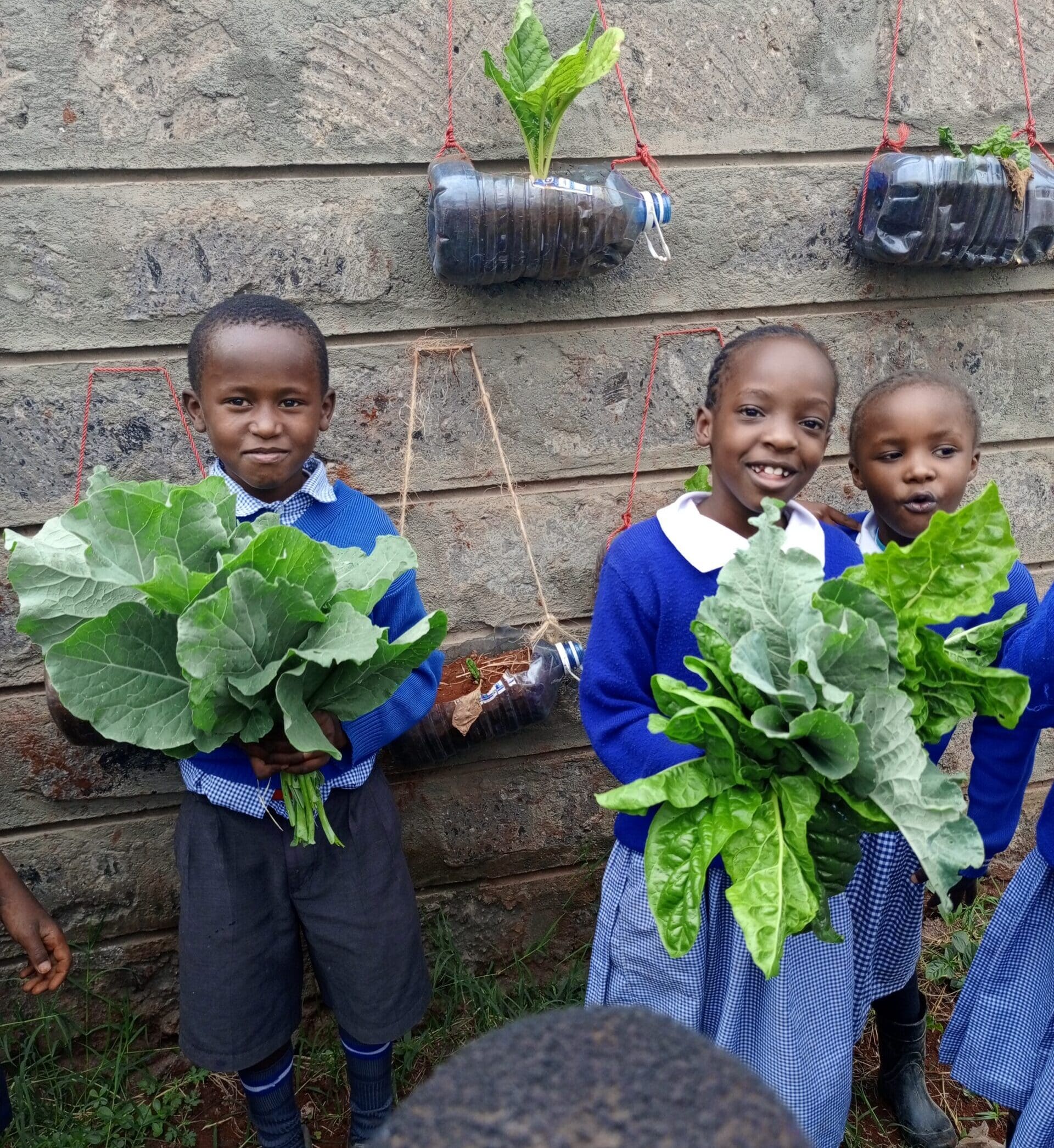
Kwe Njenga Primary School students with the vegetables they grew in discarded plastic bottles turned into planters. (Photo Courtesy of Esther Gacigi)
Climate education, Gacigi said, is “to build students’ agency to empower them to be leaders who are able to shape a better future for themselves and all of us.”
“In one way or another, our students are already living through the impacts of climate change,” she said. “So we have to equip them to both understand it, and do something about it. If we don’t, we are failing them. We will rob them of their future.”
One of Gacigi’s students, 9-year-old Sibel Takaa, describes the drought’s impact as “a lot of dust and very little water. My family sometimes lacked food. Many of my friends also lacked food. You want to learn when you are in school, but when you are hungry, you can’t pay attention in class.”
Now, said Sibel, “climate education makes learning fun and interesting for us. Even though climate change seems big, we are doing something about it. We are taking charge in shaping our today and our future.”
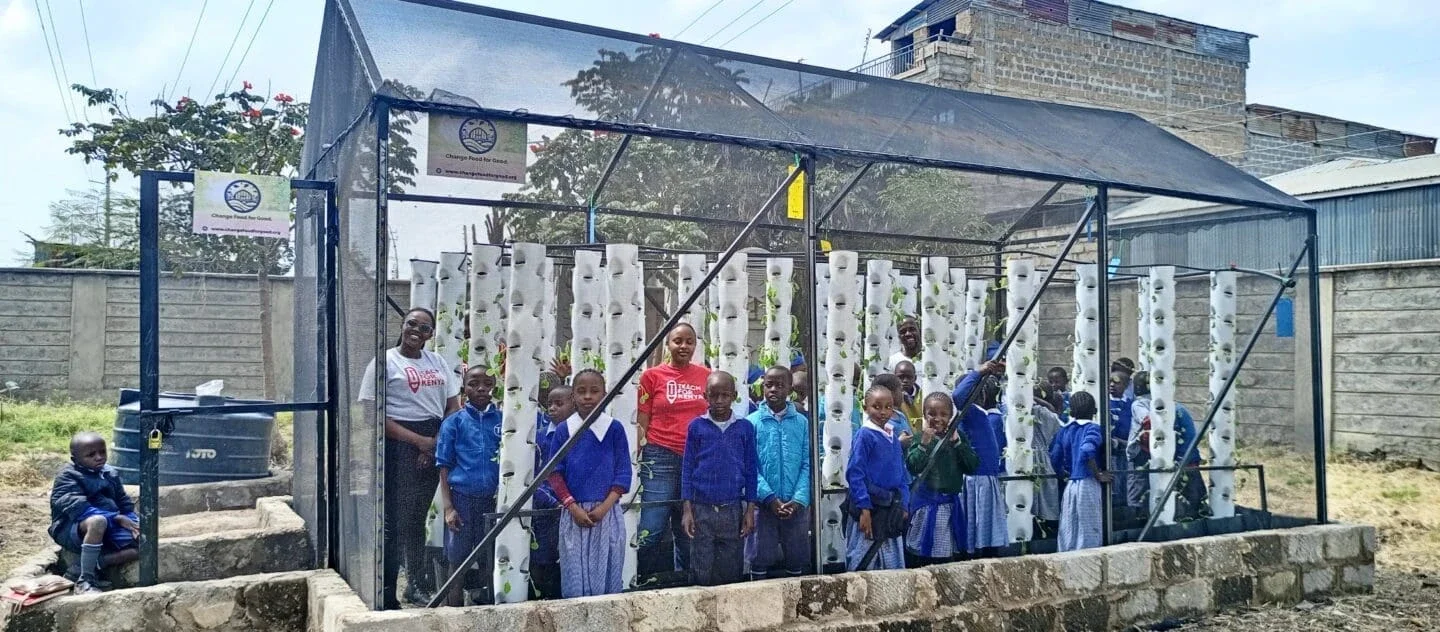 Students inside the vertical garden they built at Kenya's Kwe Njenga Primary School. (Photo Courtesy of Esther Gacigi)
Students inside the vertical garden they built at Kenya's Kwe Njenga Primary School. (Photo Courtesy of Esther Gacigi)
Challenged to Develop Solutions
Gacigi’s third-grade class of 65 students watched videos and made art to build their climate literacy. Gacigi then challenged the students to develop solutions to impact the community. “Learners came up with an innovative gardening solution: with the help of parents, they collected plastic waste that we turned into gardens.”
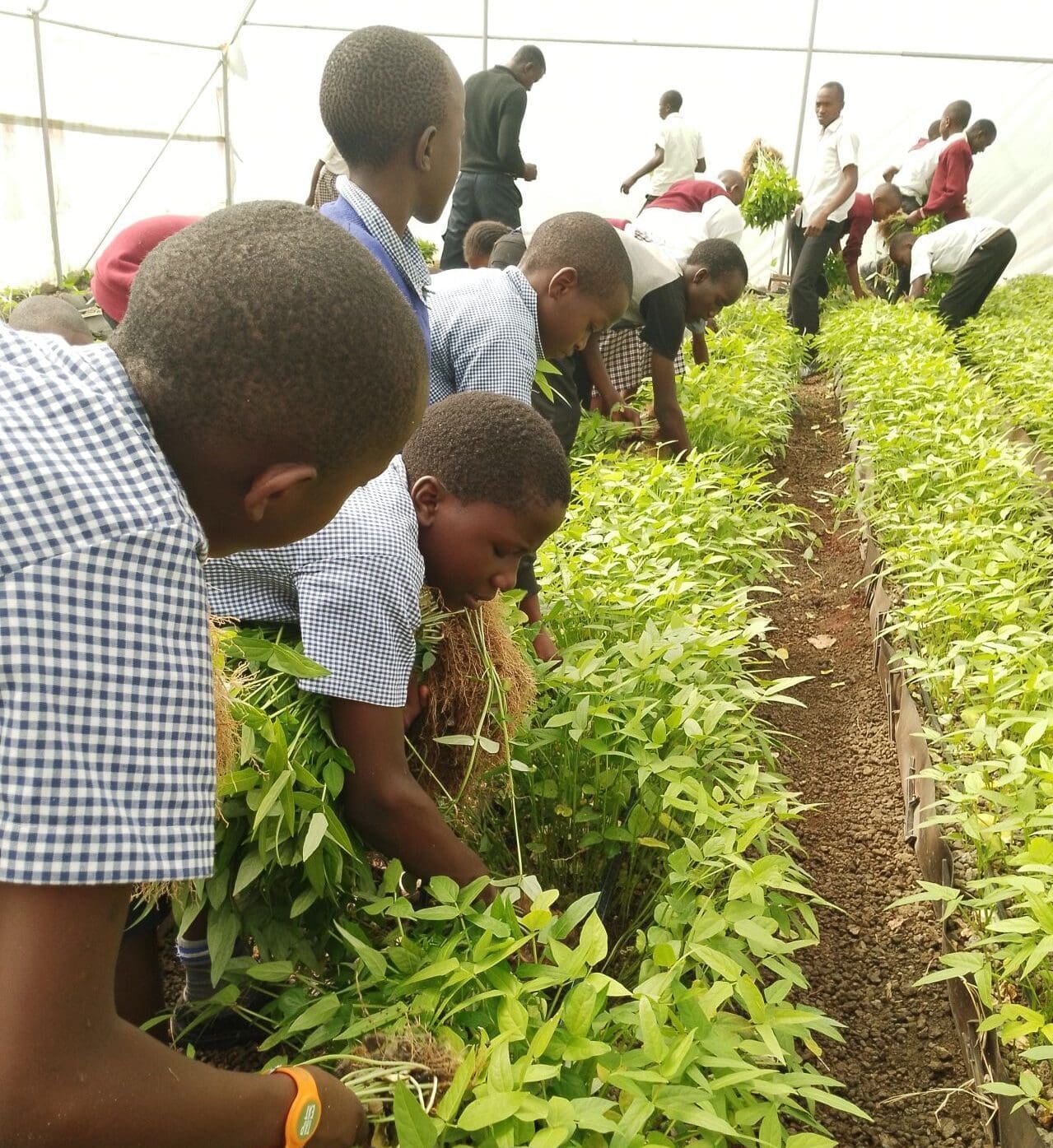
Students working in the greenhouse at Kwe Njenga Primary School in Kenya. (Photo Courtesy of Esther Gacigi)
Joined by about 15 fifth and seventh graders, the pupils planted and harvested collard greens, spinach, onions, coriander, and carrots. The older students, supported by Teach For Kenya fellows and government teachers, also created vertical gardens and started an “Adopt a Tree” program to make school grounds greener and the air cooler and cleaner.
The project has changed Kwe Njenga Primary School and many of its 2,500 students.
“At first the administration thought we were wasting a lot of time outside. But after they saw student performances improving, they became supportive, and that was key to our success,” Gacigi said. “They reached out to the community and civil society organizations, and we were able to install two greenhouses.”
School = More Than Academics
Gacigi herself grew up in a farming family in one of Kenya’s food basket areas. “I spent almost every Saturday in the garden planting, weeding, harvesting, and we had plenty of food to sustain ourselves and sell because there was plenty of rainfall.”
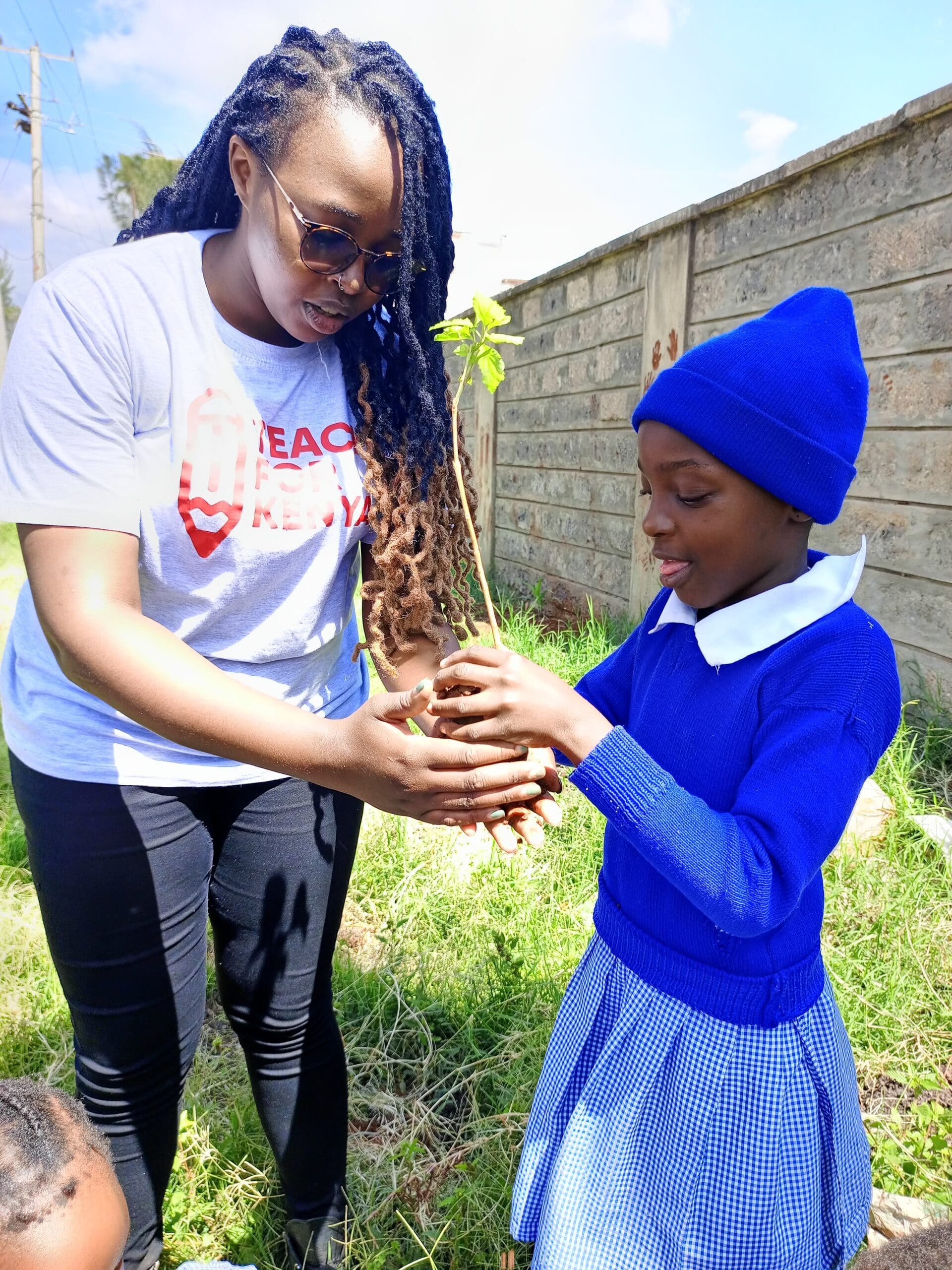
Educator Esther Gacigi helps a student plant a seedling. (Photo Courtesy of Esther Gacigi)
This changed in 2008 when Kenya experienced a devastating drought. “It even impacted an area like mine,” she said. “I was 12 years old at the time. Crops died in the field. The suffering my family and community went through deeply impacted me. But in school, I never learned why this was happening or what I could do.”
Gacigi, along with educators from Nigeria, Uganda, Sierra Leone, and Zimbabwe, recently founded the Pan-African Climate Education Network (PACE), which now has 137 members from nine African countries.
Its aim is to build collective agency to implement quality climate education in Africa. She and another teacher also developed a climate module and have already engaged 171 teachers, including many who work in underserved communities.
“School can’t just be about academics anymore,” Gacigi said. “It also has to be about skills and values to be relevant and meaningful to students. It would be amazing to have climate change included in every teachers’ education, so they are ready to incorporate climate change into their lessons.”
Find her solution on the Teachers for the Planet website.
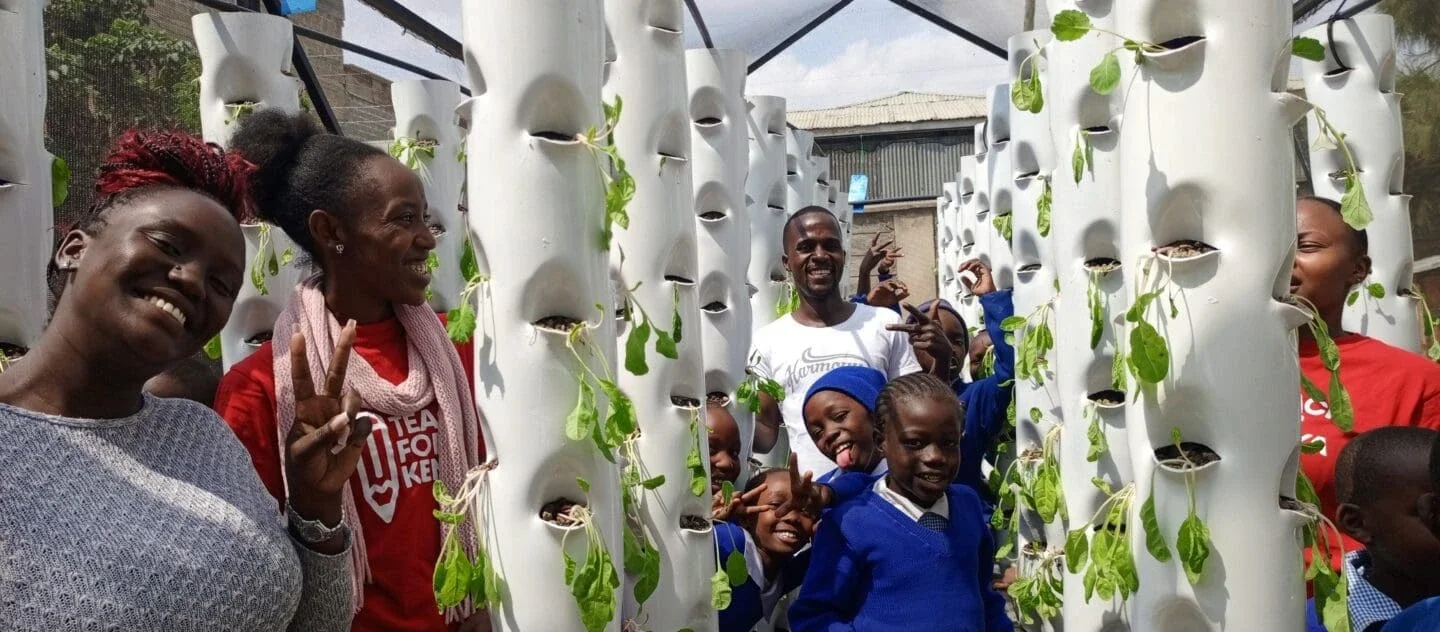 Students in the vertical vegetable gardens they created to meet the challenges of climate-worsened food insecurity. (Photo Courtesy of Esther Gacigi)
Students in the vertical vegetable gardens they created to meet the challenges of climate-worsened food insecurity. (Photo Courtesy of Esther Gacigi)